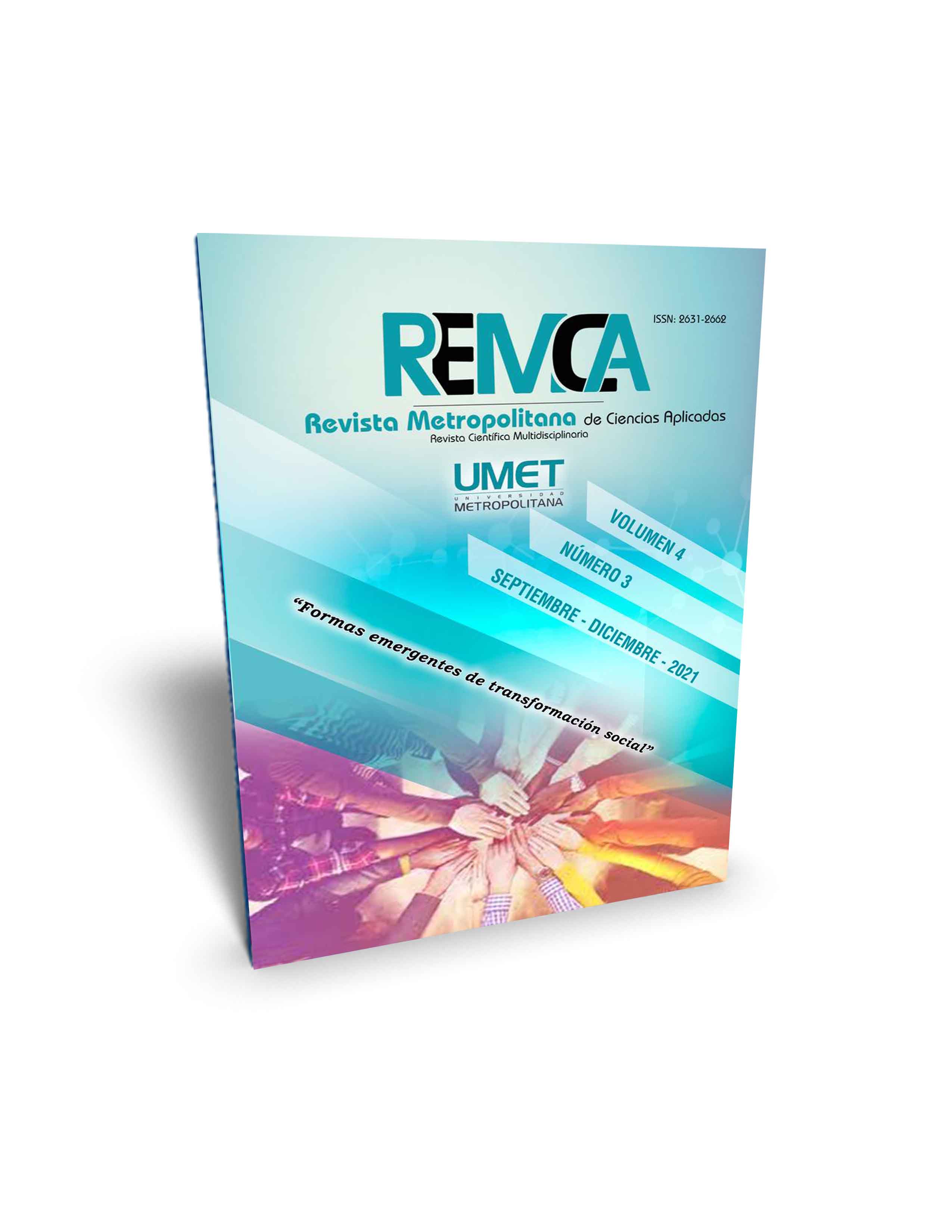Modelo estratégico de costos una ventaja competitiva de sostenibilidad para la producción de banano
DOI:
https://doi.org/10.62452/8dw4zk71Palabras clave:
Estrategias de costos, ventaja competitiva, sector bananeroResumen
La producción de banano es una actividad económica con mayor dinamismo en la economía del Ecuador, logrando su consolidación en mercados internacionales. No obstante, el límite de adaptación que tienen los microempresarios a entornos competitivos afecta las posibilidades de crecimiento de las MIPYMES. Por consiguiente, este sector exige la adaptación y adopción de estrategias para la integración de la innovación, investigación y desarrollo tecnológico en la cadena productiva. Partiendo de esta problemática, el objetivo de esta investigación es describir elementos generadores de ventaja competitiva a partir de un modelo estratégico de costos, que garantice la productividad y el desarrollo sostenible de las MIPYMES en el sector bananero de la provincia de El Oro; que proporcione costos razonables para lograr rendimientos óptimos de producción. Para ello, se realizó un estudio previo de los costos a la finca Miguel Ponce, ubicada en el cantón El Guabo. Al mismo tiempo, se aplicaron 100 encuestas a medianos y pequeños productores de banano, para identificar las necesidades que tienen en relación a la implementación de herramientas estratégicas que aseguren una producción de calidad competente frente al resto de mercados, promoviendo el incremento de la capacidad productiva que impulse el desarrollo local sostenible a largo plazo.
Descargas
Referencias
Alaña Castillo, T., Crespo, M., & Gonzaga, S. (2018). ¿Cómo las estrategias empresariales permiten una ventaja competitiva en las micro, pequeñas y medianas empresas de la provincia de El Oro?. Universidad y Sociedad, 10(2), 257-262.
Andrade, J. W. (2012). Diseño para implementar un sistema de gestión de calidad en la empresa productora de banano Exocep S.A conforme a los estándares de calidad e la norma ISO 9001:2008. (Tesis doctoral). Universidad Particular de Loja.
Banco Central del Ecuador. (2019). La Economía ecuatoriana creció 0,6% en el primer trimestre del 2019. https://www.bce.fin.ec/index.php/boletines-de-prensa-archivo/item/1182-la-economía-ecuatoriana-creció-06-en-el-primer-trimestre-de-2019
Capa Benítez, L. B., Alaña Castillo, T. P., & Benítez Narváez, R. M. (2016). Importancia de la Producción de Banano Orgánico. Caso: Provincia de El Oro. Universidad y Sociedad, 8(3), 64-71.
Casas Mejía, L. M. (2018). Gestión estratégica de costos y la rentabilidad de la empresa PROPESUR S.A, período 2014-2017. (Tesis de posgrado). Universidad Nacional Jorge Basadre Grohmann-TACNA.
Cortés Mura, H. G., & Peña Reyes, J. I. (2015). De la sostenibilidad a la sustentabilidad. Modelo de desarrollo sustentable para su implementación en políticas y proyectos. Revista Escuela de Administración de Negocios, (78), 40-54.
Culqui, J. E., & Suárez, D. P. (2019). Ventaja Competitiva de distitntas industrias según la aplicación de diamante de Porter. TAMBARA, (50), 693-703.
Ecuador. Instituto Nacional de Investigaciones Agropecuarias. (2016). Fortalecimiento de pequeños productores de banano orgánico; integración de actores manejo sostenible de plagas y estrategias de salud de suelos. INIAP. https://www.iniap.gob.ec/pruebav3/wp-content/uploads/2018/05/Proyecto%20Banano%20Org%C3%A1nico.pdf
Ecuador. Instituto Nacional de Estadísticas y Censos. (2019). Encuesta de Superficie y Producción Agropecuaria Continua. ESPAC 2018. INEC. https://www.ecuadorencifras.gob.ec/documentos/web-inec/Estadisticas_agropecuarias/espac/espac-2018/Presentacion%20de%20principales%20resultados.pdf
Ecuador. Servicio de Rentas Internas. (2019). Catastro de Información sobre las actividades económicas inscritas en el SRI. https://www.sri.gob.ec/web/guest/catastros
Ibarra, M., Gonzalez, L. A., & Demuner, M. D. (2017). Competitividad empresarial de las pequeñas y medianas empresas manufactureras de Baja California. Estudios Fronterizos, 18(35), 107-130.
Organización Internacional de Trabajo. (2011). Programa Conjunto para Fortalecimiento de la Cadena de Valor del Banano. Plan estratégico para la promoción del trabajo decente y la competitividad del sector banano. OIT. http://extwprlegs1.fao.org/docs/pdf/dom145416.pdf
Porter, M. E., & Campos, E. B. (2009). Estrategias competitivas: Técnicas para el Análisis del sector industrial y la competencia. Mc Graw Hill.
Rincón, C. A., & Villarreal Vásquez, F. (2010). Costos, decisiones empresariales. Ecoe Ediciones.
Sotelsek, D. F., & Laborda Castillo, L. (2019). Desarrollo y productividad agrícola en América Latina. Agricultura, sociedad y desarrollo, 16(1), 61-83.
Tarí Gilló, J. J. (2000). Calidad Total: Fuente de ventaja competitiva. Espagrafic.
Toro, F. (2016). Costos ABC y presupuestos. Herramientas para la productividad. ECOE Ediciones.
Zapata, P. (2015). Contabilidad de Costos: Herramienta para la toma de decisiones. Alfaomega.
Descargas
Publicado
Número
Sección
Licencia
Derechos de autor 2021 Kenia Lizzeth Carchi Arias, Fernando Juca Maldonado, Ruth Maryury Delgado Olaya, María Beatriz García Saltos (Autor/a)

Esta obra está bajo una licencia internacional Creative Commons Atribución-NoComercial-CompartirIgual 4.0.
Los autores que publican en la Revista Metropolitana de Ciencias Aplicadas (REMCA), están de acuerdo con los siguientes términos:
1. Derechos de Autor
Los autores conservan los derechos de autor sobre sus trabajos sin restricciones. Los autores otorgan a la revista el derecho de primera publicación. Para ello, ceden a la revista, de forma no exclusiva, los derechos de explotación (reproducción, distribución, comunicación pública y transformación). Los autores pueden establecer otros acuerdos adicionales para la distribución no exclusiva de la versión de la obra publicada en la revista, siempre que exista un reconocimiento de su publicación inicial en esta revista.
© Los autores.
2. Licencia
Los trabajos se publican en la revista bajo la licencia de Atribución-NoComercial-CompartirIgual 4.0 Internacional de Creative Commons (CC BY-NC-SA 4.0). Los términos se pueden consultar en: https://creativecommons.org/licenses/by-nc-sa/4.0/deed.es
Esta licencia permite:
- Compartir: copiar y redistribuir el material en cualquier medio o formato.
- Adaptar: remezclar, transformar y crear a partir del material.
Bajo los siguientes términos:
- Atribución: ha de reconocer la autoría de manera apropiada, proporcionar un enlace a la licencia e indicar si se ha hecho algún cambio. Puede hacerlo de cualquier manera razonable, pero no de forma tal que sugiera que el licenciador le da soporte o patrocina el uso que se hace.
- NoComercial: no puede utilizar el material para finalidades comerciales.
- CompartirIgual: si remezcla, transforma o crea a partir del material, debe difundir su creación con la misma licencia que la obra original.
No hay restricciones adicionales. No puede aplicar términos legales ni medidas tecnológicas que restrinjan legalmente a otros hacer cualquier cosa que la licencia permita.




